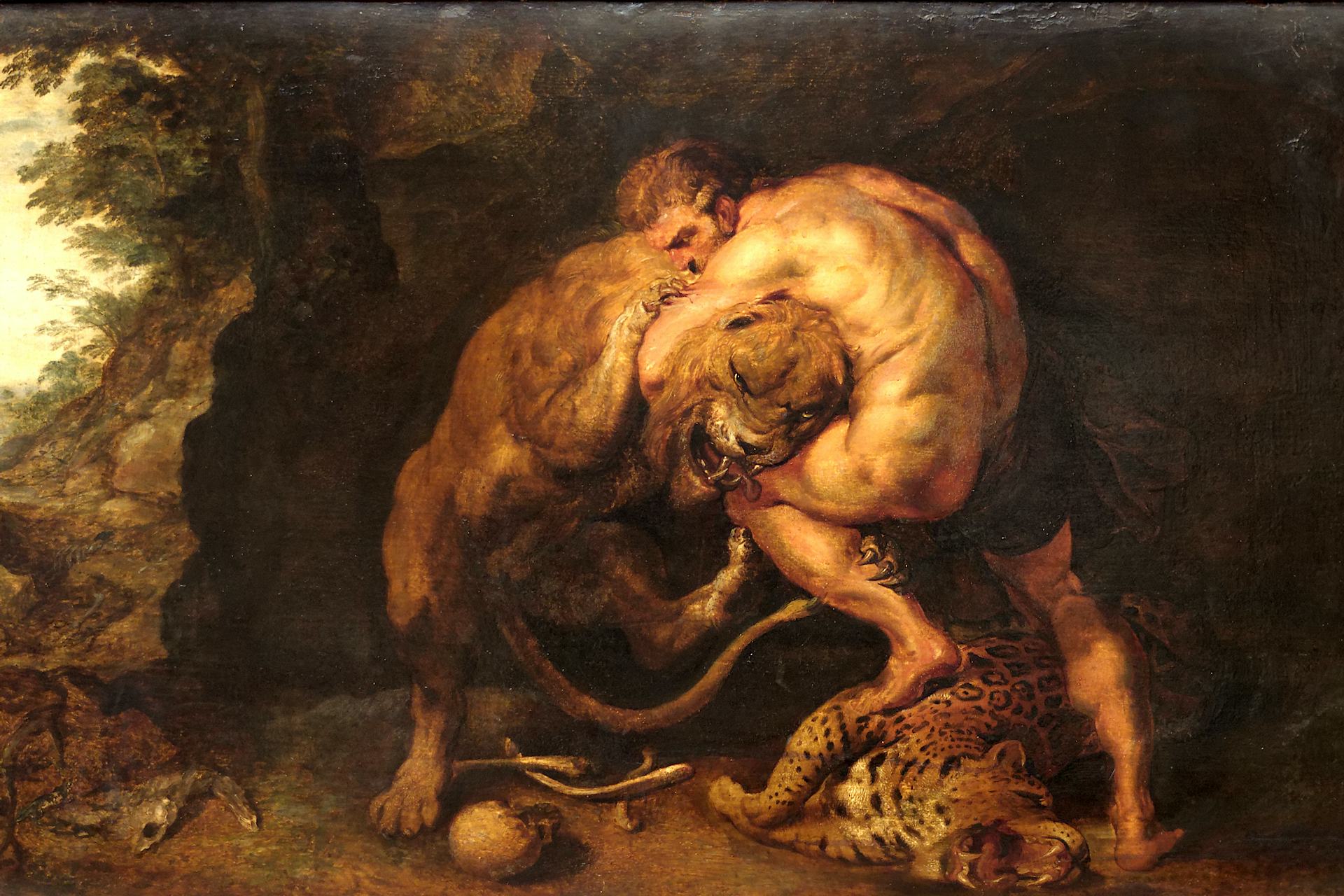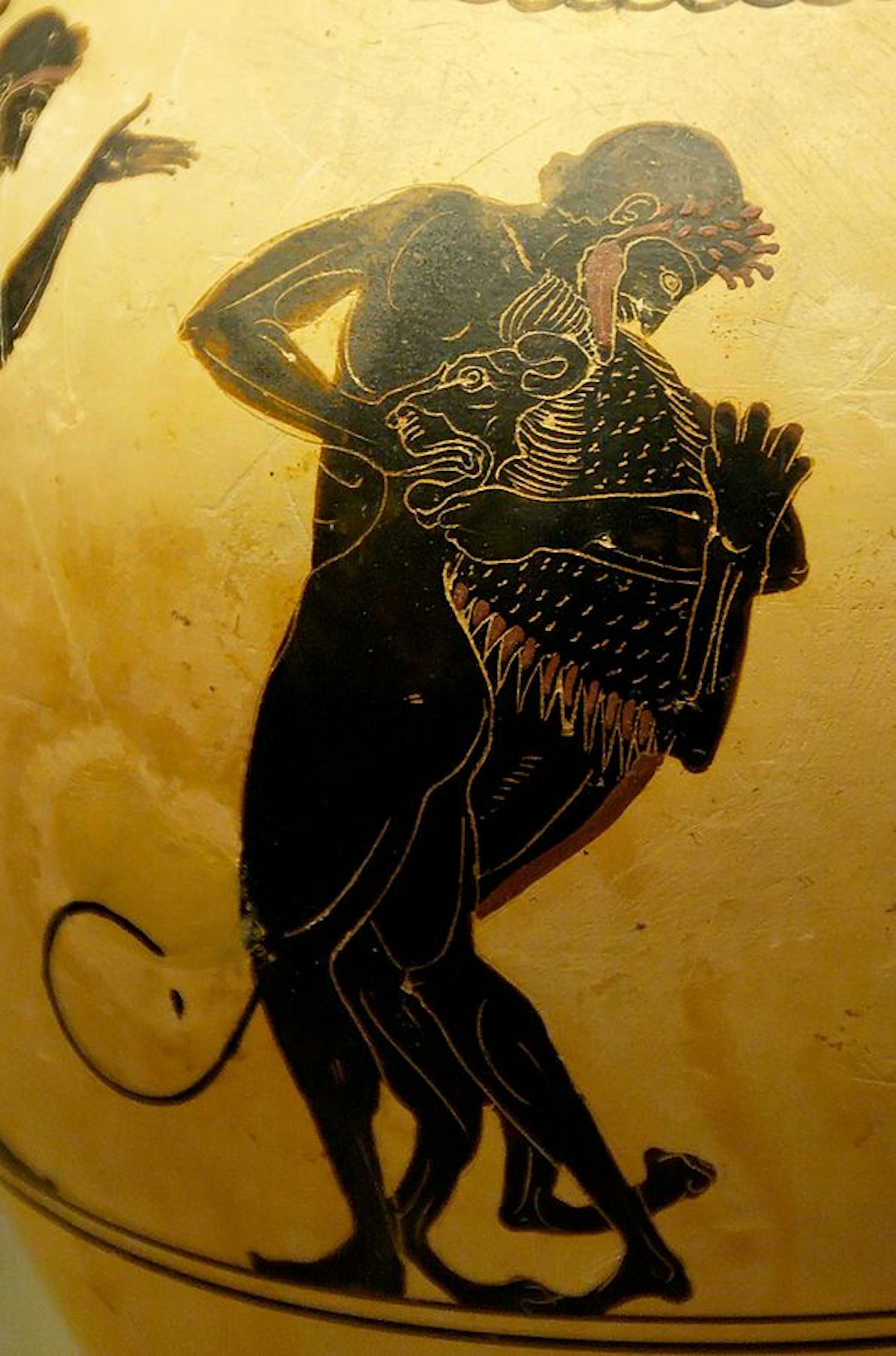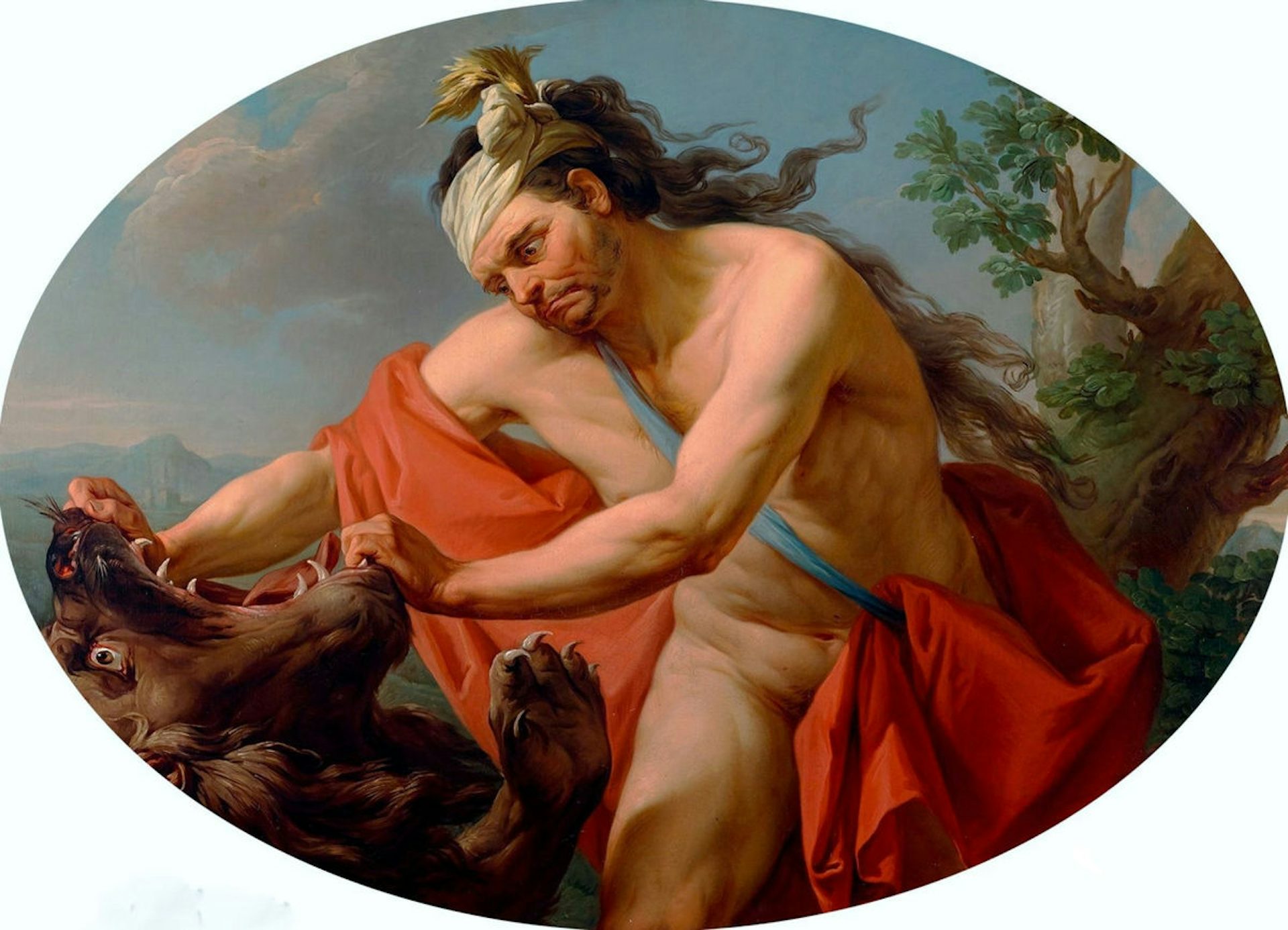Nemean Lion

Hercules and the Nemean lion by Peter Paul Rubens (ca. 1615).
Wikimedia CommonsPublic DomainOverview
The Nemean Lion was usually described as the offspring of Orthus and Echidna, or alternatively as the offspring of Typhoeus (all fearsome monsters). It was a vicious beast noted for its invulnerable hide, which could not be pierced by any weapon.
The Nemean Lion terrorized the area around the town of Nemea (from which it earned its name) until it was finally slain by Heracles—a son of Zeus and the greatest of the Greek heroes. Heracles was sent to fight the lion as the first of his Twelve Labors, ultimately defeating it with his bare hands. Once the Nemean Lion was dead, Heracles wore its hide as armor in all his future battles; this became one of the hero’s most recognizable attributes.
Etymology
The Nemean Lion (Greek Νεμέος λέων, translit. Neméos léōn) was named after the town of Nemea, where it lived.
Pronunciation
English
Greek
Nemean Lion Νεμέος λέων (translit. Neméos léōn) Phonetic
IPA
[NEE-mee-uhn LAHY-uhn] /ˈni mi ən ˈlaɪ ən/
Attributes
Locale
The Nemean Lion lived in the foothills and mountains around Nemea, a town in the northeastern Peloponnese. Some sources claimed to know the exact location of its den, pinpointing it to a mountain between Nemea and Mycenae called Mount Tretus.[1]
Appearance and Abilities
Outwardly, the Nemean Lion was less outlandish than many of the other beasts of Greek mythology, who often possessed extra limbs or combined the attributes of multiple creatures. In this case, the Nemean Lion was most often represented as a typical lion, if perhaps exceptionally large and ferocious.
Unlike a typical lion, however, the Nemean Lion boasted a hide that was completely invulnerable: it could not be pierced by any weapon.[2] Emboldened by its invincibility, the creature terrorized the land around Nemea, hunting and devouring those who lived nearby until it was killed by Heracles.[3] The hide of the Nemean Lion was put to good use even after its death—it was worn by Heracles as armor.
Iconography
The Nemean Lion was an extremely popular subject in ancient art. Countless vase paintings and sculptures show the battle between Heracles and the beast, while many others represent Heracles with the hide of the skinned Nemean Lion draped over his shoulders.[4]

Attic black-figure oinochoe showing Heracles and the Nemean Lion by the Painter of London (ca. 520–500 BCE). Found in Vulci. British Museum, London.
JastrowPublic DomainFamily
Family Tree
Mythology
The Nemean Lion is remembered almost exclusively as Heracles’ adversary. Hesiod summarizes the myth succinctly:
Echidna was subject in love to Orthus and brought forth the deadly Sphinx, which destroyed the Cadmeans, and the Nemean lion, which Hera, the good wife of Zeus, brought up and made to haunt the hills of Nemea, a plague to men. There he preyed upon the tribes of her own people and had power over Tretus of Nemea and Apesas: yet the strength of stout Heracles overcame him.[11]
Regardless of the Nemean Lion’s parentage, the purpose of the creature’s existence was always the same: to fight Heracles.
In order to guarantee that the Nemean Lion would pose a serious threat to Heracles, Hera herself, the queen of the gods, took a hand in its upbringing. Hera hated Heracles because he was the illegitimate son of her husband Zeus, who had fathered the boy with the mortal princess Alcmene. Hera hounded Heracles throughout his life and was the true architect of the grueling Twelve Labors. In an ironic twist of fate, rather than destroying the powerful Heracles, these labors instead earned the hero undying fame.

Hercules and the Nemean Lion by Marcello Bacciarelli (1776–1777).
Wikimedia CommonsPublic DomainHeracles was sent to kill the Nemean Lion as the first of his labors. There were several different accounts of the battle. The poet Theocritus describes how Heracles found the Nemean Lion “full fed both of flesh and gore, his tangled mane, his grim visage and all his chest spattered with blood, and his tongue licking his chaps.”[12] Some suggested that Heracles first tried to attack the Nemean Lion with various weapons, including his club, sword, or bow, before realizing that the creature was invulnerable to weapons and that he would have to fight it with his bare hands.
In most traditions, Heracles wrapped his meaty arms around the throat of the Nemean Lion and strangled it. Some ancient vase paintings, however, show Heracles grappling with the lion or tearing its jaw, similar to how the Hebrew Samson defeated his lion. It was sometimes said that Heracles lost one of his fingers in the fight (with other sources adding that a tomb was built for this finger) or that a snake fought alongside Heracles.
After defeating the Nemean Lion, Heracles skinned it (with one of its own claws, some added, since the creature was invulnerable to all other weapons). He then draped the hide over his shoulders and used it as armor in all of his numerous future battles.[13]
One tradition adds that Heracles stopped at the town of Cleonae on his way to Nemea, where he was shown hospitality by a kindly man named Molorchus. Heracles told Molorchus to wait thirty days for him to return from his battle with the creature; if he did not return, Molorchus was to make a sacrifice to Heracles as a god. When thirty days had passed and there was still no trace of the hero, Molorchus assumed he was dead and sacrificed to him. Soon after, of course, Heracles did come back, and he and Molorchus both sacrificed to Zeus.[14]
Some said that the Nemean Lion was transformed into a constellation after its death, becoming immortalized in the sky as the Zodiac sign Leo.[15]
Pop Culture
The Nemean Lion has appeared in numerous pop culture adaptations of the Heracles myth, often with distinctly modern twists. In the 1990s TV series Hercules: The Legendary Journeys, for example, the hero slays the lion and then uses its hide to play with children. The lion also plays a minor role in the 1997 Disney film Hercules, in which it bears a striking resemblance to the lion Scar (the villain of Disney’s The Lion King).